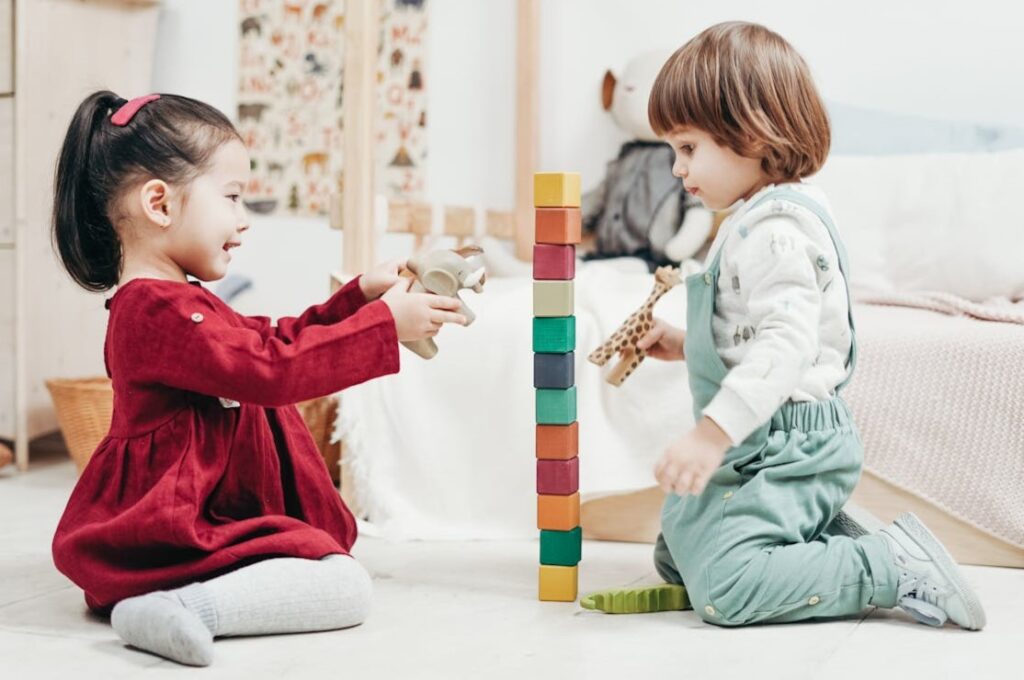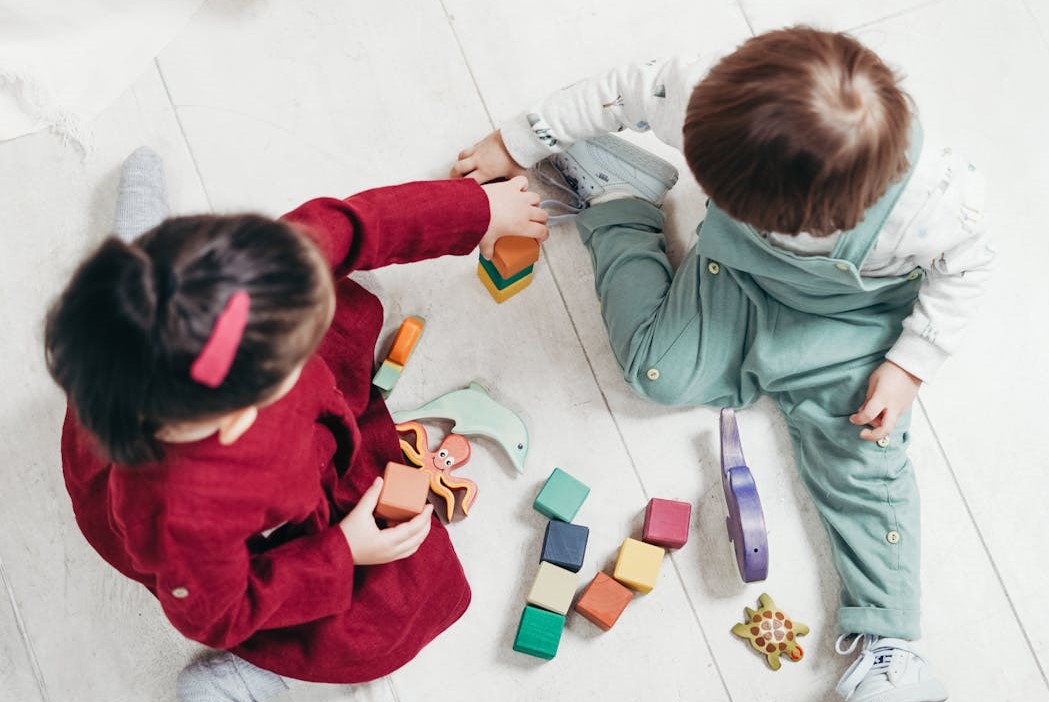Children’s Collaborative Play is the basis of what eventually becomes adults collaborating with others in the workplace. Successful collaboration involves taking turns, sharing, following rules, negotiating, and compromising. Young children interact with peers to accomplish shared goals and develop these skills. Collaboration in Play fosters the ability to help others, share materials, achieve a goal together, organizational skills, patience, and turn-taking. Learning the skills involved in collaboration becomes as important as accomplishing the task.
In this blog, I distinguish between Collaborative Play and Cooperative Play.
In Collaborative Play, children work together towards a common goal or outcome. It is about children contributing their ideas, skills, and efforts to achieve a shared objective. They need to communicate, negotiate, and coordinate with each other actively. They are building an ability to recognize and value others’ contributions. Cooperative Play is typically organized by an adult following established rules or guidelines. Cooperative Play is often more teacher-directed than Collaborative Play.

🌟 #CollaborationInAction #ChildhoodExplorers #TogetherWeAchieve
Humans are social creatures. Collaboration is hardwired into us for survival. Seeds of collaborative behaviors are first seen when an infant smiles at their caregiver, and that smile is reciprocated. Noticeable collaborative behaviors start earlier than some Early Childhood Educators (ECEs) may be aware.
As early as nine months old, infants are handing things to others, rolling a ball back and forth with another, playing peek-a-boo, or working with adults to complete a simple task. By the age of 24 months, young children can form a shared goal and begin understanding the give and take necessary for collaboration. They are capable of adapting more frequently to changing circumstances and collaborating with peers. By three years of age, children can join with a partner to accomplish a joint goal. They will have rudimentary planning and work together through trial and error. Consider two three-year-olds carrying a heavy water bucket or block or working together to get a toy up a slide. These are joint endeavors that require collaboration (Tomasello & Hamen, 2012).
Collaborative Play Tips
Give students space to meet a challenge:
Give students the appropriate amount of space for collaboration challenges. You can do this since you know about your students and their needs. When the two children are working to accomplish something together, whether it is a block tower, playing dress-up, looking at a book, sharing a toy, etc., closely observe and give them the space to negotiate together to come up with a way to work together—step in with an offer to help them solve their problem rather than offering a solution.
Art:
Give two students a large piece of paper to work on and have them collaborate on their picture. They may work side by side, but sharing the materials is collaborating. They may surprise you and create something together. Have them make a sculpture with recycled items and tape, put two children on one easel, and see what they can do together.
Question Posing:
The questions listed below are a few examples. The common thread in all of them is that they ask two or more children to collaborate to solve a problem.
- Can you show me how you can share these toys so both of you can play with them?
- Can you and your friend think of a song we can all sing together?
- Can you and your friend think of a way to build a fort using these blankets and pillows?
- How can you and your friends work together to plant these flowers in the garden?
- Can you and your friend think of a way to solve this puzzle together?
- How can you work together to make sure that everyone gets a fair turn during your game?
- Can you and your friend build a block tower together?
*A great book about collaborating is We’re All in the Same Boat! by Barney Saltzberg (Preschool–grade 2): A goat, a pig, a cat, and a dog paddle together during a boat ride. There are lots of fun challenges along the way that they have to solve together.
Collaboration is a skill used throughout our lives. Think of all the collaboration you have done at work and home today. Whether teaching in a childcare center, playing in a trio or a full-blown orchestra, building a shed or a skyscraper, or being a firefighter, collaboration is essential to success.
Let’s nurture collaboration in early childhood education to build lifelong skills.
Elevate your understanding of early childhood education and child development with my engaging preschool education workshops tailored for both teachers and parents. These workshops provide valuable insights, practical strategies, and effective tools to enhance your role in nurturing young minds. Whether you’re an educator or a parent, these sessions aim to empower you with the knowledge and skills essential for fostering a positive learning environment. Dive deeper into the world of preschool education and child development by exploring my workshop offerings. For more valuable content and updates, follow me on Instagram and connect with me on LinkedIn. #EarlyYearsConsult
#EarlyChildhoodEducation #ChildDevelopment #PreschoolWorkshops #EducatorServices #ParentingTips #LearnAndGrow

